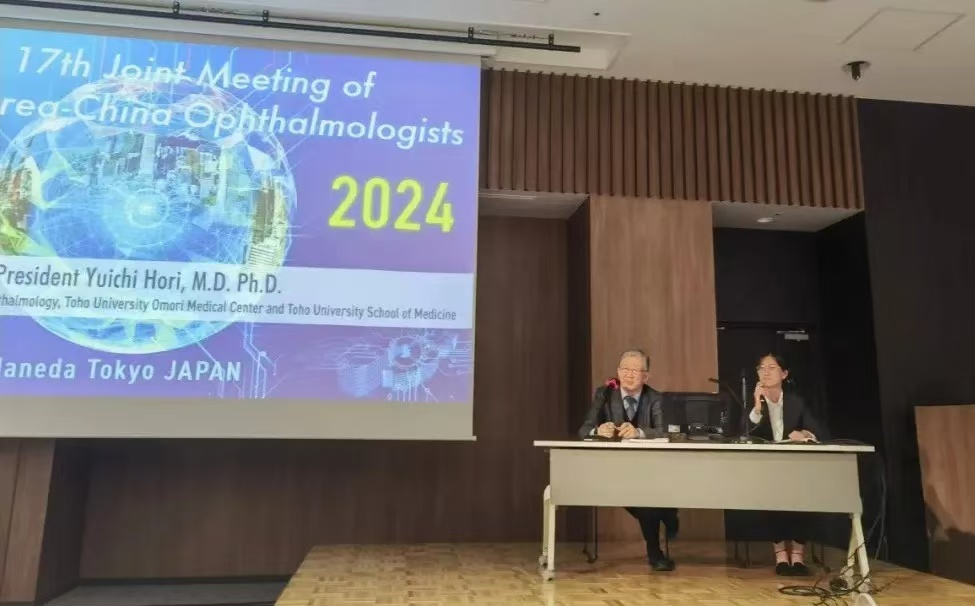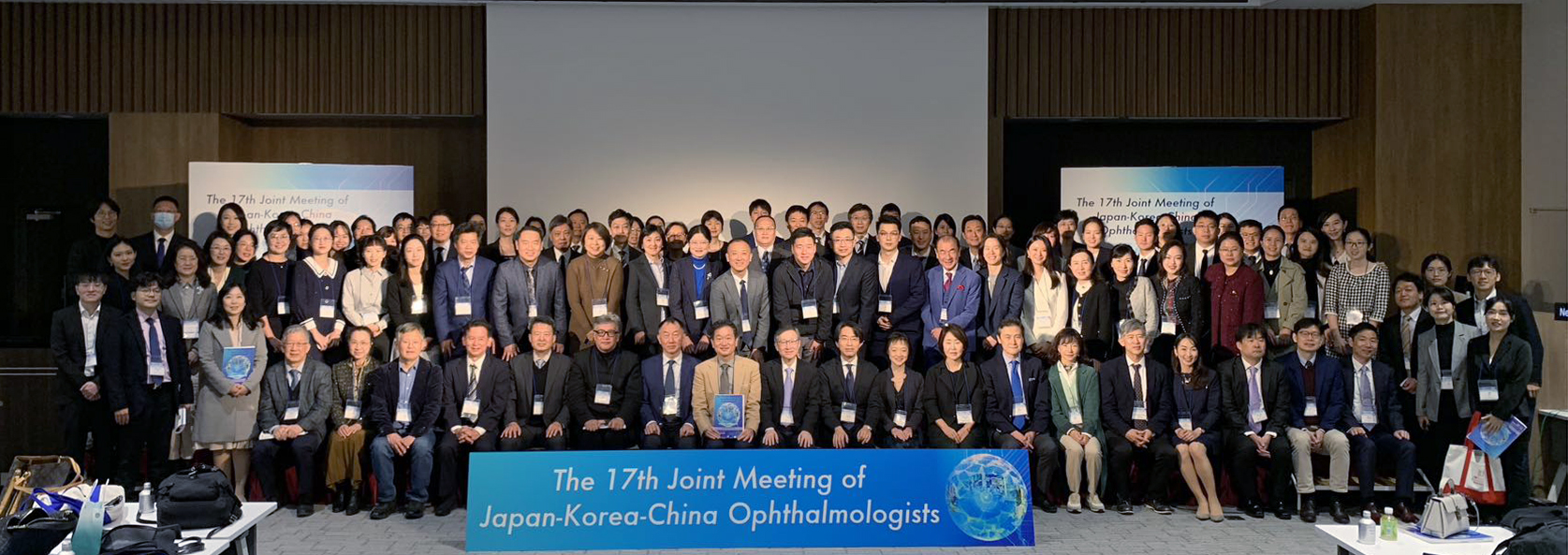The 17th Joint Meeting of Japan-Korea-China Ophthalmologists Held in Tokyo, Japan — Eyedeal’s Cross-linked Polyolefin xPIB Intraocular Lens Clinical Research Shines

On November 9, the 17th Joint Meeting of Japan-Korea-China Ophthalmologists was successfully held at Congrès Square Haneda in Tokyo, Japan.


Chinese Chair Professor Xinghuai Sun Delivered the Opening Address
The Chinese chair of this year’s meeting was Professor Xinghuai Sun, President-elect of the Chinese Ophthalmological Society . The Japanese chair was Professor Yuichi Hori (Toho University), and the Korean chair was Professor Chan Yun Kim (Yonsei University). With meticulous planning, thoughtful organization, and extensive promotion by the organizing committees of the three countries, the conference received a total of 436 paper submissions — a record high in the event’s history.
At the conference, Professor Qun Peng, Chief Medical Officer of Eyedeal, delivered a keynote speech titled “Randomized, Multi-Center Clinical Trial to Evaluate Safety and Efficacy of a Novel Cross-linked Polyisobutylene (xPIB) IOL Following Cataract Removal.” He gave a detailed presentation on the results of a domestic multi-center clinical trial for the cross-linked polyolefin (xPIB) intraocular lens (IOL), which garnered high praise from attending experts and sparked great interest in this innovative product.

As a brand-new biomaterial product, the xPIB IOLs was compared through a multi-year, randomized, parallel-controlled clinical trial with today’s mainstream hydrophobic acrylic IOLs. Clinical data showed that patients implanted with the xPIB IOL all met the primary efficacy endpoints set by the study. No adverse events related to the xPIB IOL were observed during the trial. The findings concluded that this novel material-based intraocular lens is a safe and effective medical device for vision correction after cataract surgery.
Furthermore, the xPIB IOL offers several innovative features, including superior biocompatibility that effectively reduces postoperative inflammation, compatibility with micro-incision surgery, and an ultra-large optical zone (diameter > 6.5 mm). These features contribute to the elimination of glare and halos. Professor Peng noted that after the product launches domestically, a series of long-term clinical studies will follow to further explore the material’s unique properties, design iterations, and clinical potential — unlocking the endless possibilities of the xPIB platform for next-generation intraocular lenses.

Commenting on the presentation, expert Jong Song Lee highlighted the excitement surrounding the xPIB IOL, attributing its promise to the advantages of this new generation biomaterial and its strong clinical performance. He stated that the xPIB IOL could be a superior choice for cataract surgeries in the future and expressed hope to see more such breakthroughs published on global platforms.
Following the session, Professor Peng engaged with fellow experts on the unique properties of the xPIB material — including no glistenings, no calcification, high refractive index, and high Abbe number. A Japanese ophthalmologist commented that in his many years of research, he had yet to find a more ideal material to address the current challenges of IOLs. He considered the xPIB IOL by Eyedeal to be the most significant technological breakthrough in the IOL field in the past 30 years. Professor Jiwon Jeong from Korea added, “The excellent biocompatibility and stability of xPIB means cataract patients can achieve better visual outcomes postoperatively. As an ophthalmologist, I am very eager to be among the first to use this product in Korea.” Professor Peng also mentioned that xPIB IOL clinical trials are ongoing in the EU, and U.S. clinical trials and regulatory approval processes are also advancing steadily.

In addition to the keynote speeches, the conference featured special topic sessions and poster presentations across 25 academic units, covering areas such as corneal diseases, glaucoma, retinal diseases, ocular tumors and oculoplastics, cataracts, strabismus, blindness prevention, and basic research.
It is reported that the Japan-Korea-China Joint Meeting of Ophthalmologists was jointly initiated in 2008 by the Chinese Ophthalmological Society, the Japanese Ophthalmological Society, and the Korean Ophthalmological Society. It has since become one of the most prestigious ophthalmology conferences in Asia. The theme of this 17th meeting was to promote exchange and cooperation in new technologies, research, and applications among China, Japan, and Korea, to advance ophthalmology in Asia and enhance its global influence.
The 18th Joint Meeting of Japan-Korea-China Ophthalmologists will be held in China in 2025. It is anticipated that the organizing committees of the three countries will work closely together to elevate the conference to a higher international standard and establish it as a landmark event in global ophthalmology.